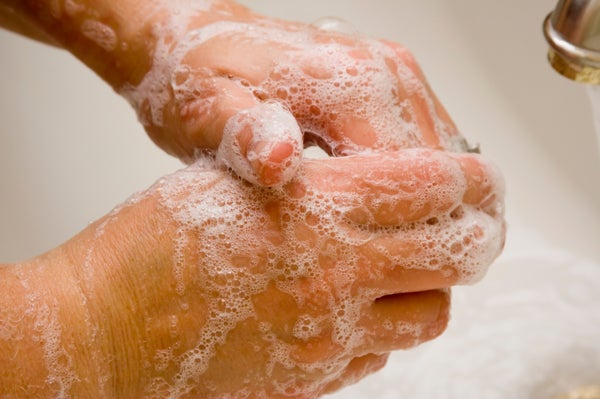This article was published in Scientific American’s former blog network and reflects the views of the author, not necessarily those of Scientific American
While not every bar (or bottle) is created equal, a bar of soap is a clear energy winner when washing your hands. According to researchers at the Swiss Federal Institute of Technology in Zurich, bar soap requires one-fifth of the energy to produce compared to liquid soap.
In their lifecycle analysis of bar soap versus liquid soap, researchers Annette Koehler and Caroline Wildbolz conducted an “in-depth life cycle assessment of nine home-care and personal hygiene products.” Their goal was to quantify and compare the environmental impacts of products that could be used for the same application – for example, bar versus liquid soap for hand washing.
In this work, they included the impacts related to the production and delivery of each type of soap as well as the actual use of the product (for, in this case, hand washing). In this work, Koehler and Wildbolz quoted previous studies from industry that looked at our hand washing tendencies. According to this research, we use the following amounts of soap and water when washing our hands:
On supporting science journalism
If you're enjoying this article, consider supporting our award-winning journalism by subscribing. By purchasing a subscription you are helping to ensure the future of impactful stories about the discoveries and ideas shaping our world today.
0.35 grams (g) of bar soap, 0.91 L of water use
2.3 grams (g), 0.64 L of water use
In other words, we use a lot more liquid soap compared to bar soap each time we wash our hands (or, in Koehler and Wildbolz’s words – more on a “functional unit” basis). But, when we use bar soap, it takes us about 42% more water to get the job done.
Note: In order to account for the energy implications of these differences in water use in their calculations, Koehler and Wildbolz assumed that people used water that is at 38 degrees C (100 F) that was warmed using a light fuel-oil boiler.
In conducting their life-cycle assessment, these researchers found that energy requirements for “raw chemical production and supply” and “packaging production and supply” were responsible for the high levels of energy use for liquid versus bar soap. They found that liquid soap is typically produced using a variety of different chemicals (meaning that the liquid is, technically speaking, usually a detergent and not actually soap per se). Furthermore, this liquid can use up to 20 times more packaging than bar soap and contains significantly more water, making it heavier and less efficient to transport from where it’s produced to where it’s used.
Now for the caveats:
not all liquid soaps are detergents (for example, Dr. Bronner’s castile liquid soap) and some bar “soaps” should actually be called detergents and are full of chemicals.
while bar soaps are better from an energy standpoint, as mentioned above, Koehler and Wildbolz found that the bar has a larger impact on land use than its liquid counterparts due to its use of vegetable oils (which are farmed).
Overall, in the words of Koehler and Wildbolz:
“In general, cleaning agents reveal very similar environmental profiles because of similar consumer applications, equivalent packaging systems, and minor differences in chemical composition. Although the cradle-to-gate environmental footprint of producing 1 kg of bar soap performs worse than that of liquid soap (Figure 1c), hand-washing with bar soap overall proves to be preferential to liquid soap for all indicators studied. The soap commodities show clear trade-offs: hand-washing with bar soap requires smaller soap amounts, and thus causes considerably lower impacts in the bar-soap supply chain (except for land-use impacts). However, larger warm-water volumes are needed for bar-soap application, and accordingly use-phase related environmental burdens are higher”
To read the complete study, including its discussion of liquid versus power detergents for your clothes (spoiler: stick to liquid) and toilet bowl cleaners, you can see:
Koehler, A. and C. Wildbolz. Environmental Science & Technology. Published 2009 doi:10.1021/es901236f (online at : http://www.ncbi.nlm.nih.gov/pubmed/20028065)
